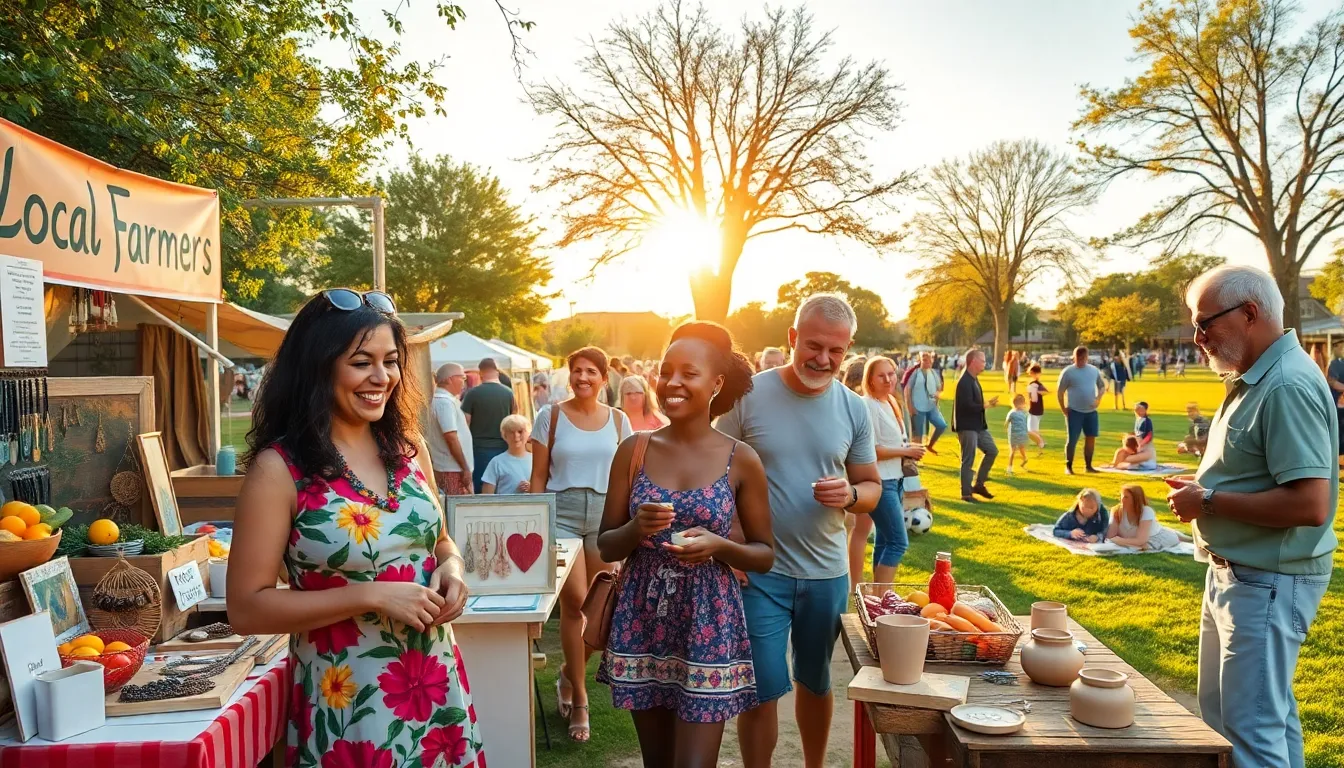Table of Contents
ToggleIn today’s economy, saving money while enjoying community events is more vital than ever. Posts#ThriftyEvents Net is a platform that helps individuals discover and participate in affordable gatherings that enrich their lives without very costly. This article will investigate into the nuances of thrifty events, how to plan them, and share success stories that inspire. By understanding the concept of thrifty events, individuals can enjoy vibrant community experiences at minimal costs, fostering connections and memories.
Understanding Thrifty Events

Thrifty events are gatherings designed to provide community enjoyment and engagement at low or no cost. These events can range from local art fairs and farmers’ markets to community picnics and educational workshops. The core idea is to bring people together in a way that promotes social interaction and cultural exchange without the financial burden that typically accompanies entertainment.
By offering accessible entertainment options, thrifty events play a crucial role in communities, especially during tough economic times. They allow individuals to socialize, learn, and experience new activities while keeping their budgets in check.
Types of Thrifty Events
There’s a wide variety of thrifty events that cater to diverse interests. Here are some common types:
Community Fairs
These events often feature local artisans, food vendors, and activities for families. Community fairs can include anything from holiday festivals to seasonal farmer’s markets.
Workshops and Classes
Many local libraries and community centers host workshops that teach skills such as cooking, gardening, or crafts. These are typically free or charge a small fee to cover materials.
Outdoor Movie Nights
Local parks frequently host outdoor movie screenings during warmer months. Families can bring their blankets and snacks for an evening of entertainment under the stars at no cost.
Book Clubs
These gatherings not only provide an opportunity for reading enthusiasts to discuss their latest reads but also often involve potlucks or shared snacks, making them a fun, casual way to connect.
Volunteer Events
Volunteering can also be a thrifty way to participate in community events. Many organizations organize clean-ups, charity runs, or community service days that offer engaging activities while fostering a sense of purpose.
Benefits of Attending Thrifty Events
Attending thrifty events comes with a myriad of benefits that enrich the individual and the community. Here are some of the key advantages:
Cost-Effective Entertainment
Thrifty events offer a way to enjoy social interaction and entertainment without the steep prices often associated with concerts or festivals.
Networking Opportunities
These events often bring together local businesses, non-profits, and community members, creating ample opportunities for networking and collaboration.
Cultural Appreciation
Thrifty events frequently celebrate local culture, art, and history. Attendees gain appreciation for their community’s heritage while engaging with local artists and performers.
Healthy Lifestyle Promotion
Many thrifty events focus on wellness, offering activities such as community yoga sessions or healthy cooking demonstrations, promoting both physical and mental well-being.
Sense of Community
Participating in these events fosters a sense of belonging, helping individuals feel more connected to their surroundings and neighbors.
Planning Your Own Thrifty Event
Planning a thrifty event can be a rewarding experience. Here are some steps to consider:
Define the Purpose
Start by identifying the goal of your event. Whether it’s to gather neighbors, encourage charity, or promote local artists, having a clear purpose will guide all other decisions.
Set a Budget
While the goal is to keep costs low, having a budget helps in planning. Consider venue options, materials needed, and possible permits.
Choose a Location
Select a venue that is accessible to your intended audience. Public parks, community centers, or even backyards can serve as excellent venues.
Promote Your Event
Use social media platforms, local bulletin boards, and community newsletters to spread the word. Creating visually appealing flyers can also help attract attention.
Engage Local Participants
Reach out to local businesses, artists, or speakers who may participate for free or at a reduced rate in exchange for exposure at your event.
Promoting Your Thrifty Event Online
In the digital age, promoting events online is crucial for attracting attendees. Here are some effective strategies:
Use Social Media
Platforms like Facebook, Instagram, and Twitter are essential for reaching broader audiences. Create an event page on Facebook where people can RSVP and share.
Create Engaging Content
Use engaging visuals and videos that capture the essence of your event. Infographic-style promotions can also convey key information quickly.
Use Hashtags
Implementing relevant hashtags can increase visibility. Consider using trending regional hashtags to help locals discover your event.
Collaborate with Influencers
Local influencers can help promote your event by leveraging their followings. Arrange for them to cover the event live or provide previews.
Email Marketing
If you have a list of contacts, consider sending an email newsletter announcing your event. Include all essential details, such as date, time, and activities planned.
Success Stories from Thrifty Events
There are numerous inspiring tales of thrifty events making a significant impact in their communities. One notable example is the annual community clean-up day in Springfield, which began with just a handful of volunteers. Over the years, it has grown into a citywide initiative attracting hundreds of participants. Local businesses support the event with donations, further enriching the community spirit.
Another success story is a neighborhood art fair that started as a small block party. It now includes various local artists, musicians, and food trucks, creating a vibrant day of culture and support for local talents. Participants note not only the joy of community engagement but also the economic boost for local vendors who are showcased.
These stories highlight how thrifty events can foster community ties and even lead to sustainable growth, proving their value beyond just the initial cost savings.
Conclusion
Thrifty events are more than just budget-friendly alternatives: they represent a movement towards creating strong, connected communities. By understanding their types, benefits, and how to plan and promote them, anyone can contribute to this enriching experience. As illustrated by the success stories, these gatherings not only bring joy but can also foster collaborations, inspire creativity, and significantly benefit local businesses. Engaging in or hosting a thifty event can lead to a more fulfilling, connected, and economically sustainable community.







